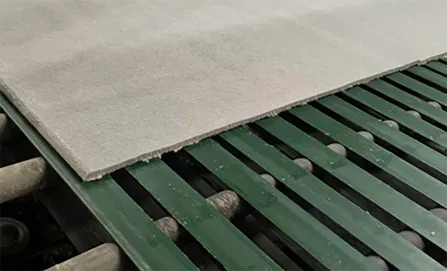Dec . 19, 2024 02:18 Back to list
suspended ceiling t grid system
Understanding Suspended Ceiling T Grid Systems
In the realm of modern architecture and interior design, suspended ceiling systems have emerged as a popular choice for both commercial and residential spaces. One of the most integral components of these systems is the T grid, which forms the foundation for a wide range of ceiling tiles and panels. This article delves into the structure, benefits, installation, and applications of suspended ceiling T grid systems.
What is a Suspended Ceiling T Grid System?
A suspended ceiling T grid system consists of a network of metal grid components usually arranged in a T shape. This structure is suspended from the structural ceiling above, creating a space between the original ceiling and the new one. The grid consists of main beams, which run in one direction, and cross tees that intersect to create a series of rectangular openings for ceiling tiles or panels.
The materials used for the T grid typically include galvanized steel or aluminum, which provide strength and durability while maintaining a lightweight profile. This configuration allows for easy access to the space above the ceiling, which is essential for the installation and maintenance of electrical, plumbing, and HVAC systems.
Benefits of Suspended Ceiling T Grid Systems
Suspended ceiling T grids offer numerous advantages, making them an attractive option for various settings
1. Aesthetic Flexibility T grid systems allow for a wide array of ceiling tiles that come in different colors, textures, and materials. This versatility enables designers to create unique and visually appealing environments suited to the specific style and function of a space.
2. Acoustic Performance Many ceiling tiles used in conjunction with T grids are designed to improve sound insulation. This quality is particularly valuable in offices, schools, and healthcare facilities where noise reduction is crucial for productivity and comfort.
3. Easy Maintenance The accessibility afforded by a suspended ceiling is one of its greatest benefits. The space above the tiles can be easily reached for inspections, repairs, or adjustments without the need for extensive demolition or reconstruction.
4. Energy Efficiency Suspended ceilings can also contribute to improved energy efficiency. By incorporating insulation into the cavity above the grid, buildings can better retain heat during winter months and maintain cooler temperatures in summer, ultimately reducing energy costs.
suspended ceiling t grid system

5. Concealing Unsightly Utilities Suspended ceilings disguise pipes, ductwork, and electrical conduits, offering a cleaner and more polished aesthetic. This is particularly important in commercial spaces where appearance is linked to brand image.
Installation of Suspended Ceiling T Grid Systems
The installation of a suspended ceiling T grid system is a straightforward process, although it does require careful planning and attention to detail. The basic steps include
1. Planning the Layout Before installation, it’s essential to measure the space accurately and determine the layout of the grid. This step involves marking reference points on the walls and establishing the height of the ceiling.
2. Installing the Main Beams Begin by attaching the main beams to the ceiling using appropriate anchors or hangers. These beams will serve as the primary support structure for the grid.
3. Adding Cross Tees Once the main beams are in place, cross tees are inserted to form the T-grid pattern. Accurate alignment is crucial at this stage to ensure the grid is level and secure.
4. Placing Ceiling Tiles Finally, ceiling tiles can be placed within the grid openings. Depending on the design, tiles can be either lay-in (resting on the grid) or glued directly to the grid framework.
Applications of Suspended Ceiling T Grid Systems
Suspended ceiling T grid systems are applicable in a variety of environments, including
- Commercial Offices To create functional and aesthetically pleasing workspaces. - Educational Institutions In classrooms and auditoriums where acoustic performance is critical. - Healthcare Facilities In operating rooms and patient areas to meet hygiene and acoustic needs. - Retail Spaces To enhance lighting, branding, and customer experience.
In conclusion, suspended ceiling T grid systems represent a versatile solution for enhancing the functionality and aesthetics of interior spaces. Their myriad benefits, ranging from improved acoustics to easy maintenance, make them an indispensable choice in modern construction and design. Whether you're renovating a workplace or designing a new building, understanding the potential of a T grid system can help you make informed architectural decisions.
-
Quality Ceiling Trap Doors & Access Panels | Easy & Secure AccessNewsAug.30,2025
-
Durable Ceiling T Grid Systems | Easy InstallationNewsAug.29,2025
-
PVC Gypsum Ceiling: Durable, Laminated Tiles for Modern SpacesNewsAug.28,2025
-
Pvc Gypsum Ceiling Is DurableNewsAug.21,2025
-
Mineral Fiber Board Is DurableNewsAug.21,2025
-
Ceiling Tile Clip Reusable DesignNewsAug.21,2025







